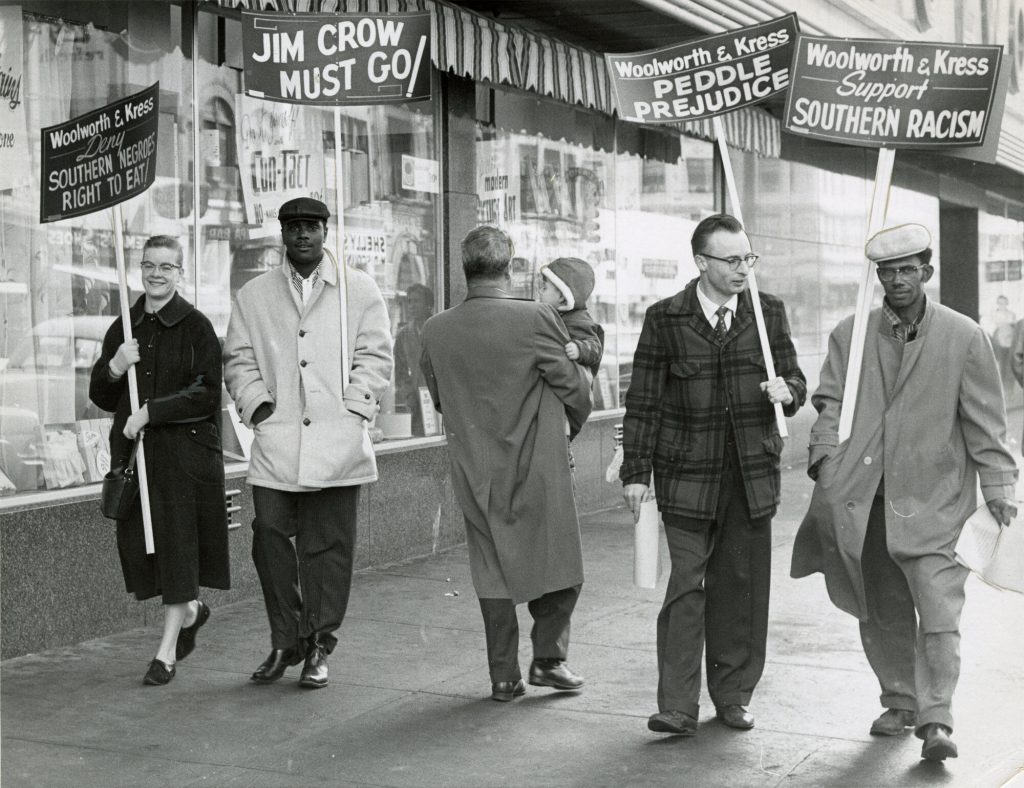Expanding Access to the Rocky Mountain News Collection
The Rocky Mountain News (RMN) was Colorado’s premier newspaper for nearly 150 years. On April 23, 1859, just five months after Denver was settled, the News became the territory’s first newspaper off the press—beating its newspaper rival by a mere 20 minutes—and continued publication until its closure in 2009. After the RMN closed, Scripps donated the newspaper, including its photographs, business records, and as well as its copyright to the Denver Public Library (DPL).
Over One Million Pages of Historic RMN News
In 2022 the DPL and the Colorado Historic Newspapers Collection (CHNC) embarked on the massive endeavor to digitize the RMN. A generous bequest from former DPL librarian Hank Shearouse launched this project. This initial funding digitized DPL’s earliest original issues of the RMN Daily and the RMN Weekly through the turn of the 20th century. While the CHNC already contained some early issues of the RMN – Weekly and Daily – these issues were digitized from microfilm. This very early microfilming was done poorly and often from originals in poor condition. When film of poor quality is digitized, it results in numerous OCR (text recognition) inaccuracies which results in little to no search results. This is a problem because when you perform a search in CHNC it’s the OCR text that the database is searching. Thankfully DPL’s archive of original newspapers produced high quality images and therefore high quality OCR text with few errors.


The project has been so well received that DPL has committed to continue the funding. To this date over 1 million pages of the RMN has been added to CHNC – The Rocky Mountain News (Weekly) April 23, 1859 – December 26, 1912; June 3, 1920 – December 30, 1920 and The Rocky Mountain News (Daily) August 27, 1860 – December 31, 1936; January 1, 1947 – November 30, 1967. The RMN is by far CHNC’s most searched title with an average of 55,000 views a month.
Our RMN researchers might notice a gap in the RMN Daily collection and a difference in appearance with issues. This project is digitizing two different sources of material – DPL’s collection of original RMN editions and their collection of RMN microfilm. The collection of originals cease on December 31, 1946 with the microfilm starting on January 1, 1947. We are digitizing both the originals and the microfilm and the current gap (1936-1947) in the collections will eventually be filled as we work through both collections.

DPL’s goal is to digitize the entire run of the Rocky through 2009. This work will likely take another 2 years to complete the roughly 3 million pages left. Newly digitized issues of the Rocky are regularly added to the CHNC so it’s important to check the site often for these new additions.
More than Just Newspapers
In 2014 DPL received RMN’s entire collection of digital photographs taken from the 1990’s to 2009. The born-digital photograph collection includes images of the 2008 Democratic National Convention, Papal visits, the Rocky’s Pulitzer Prizes including images of the Columbine High School shooting and the Hayman Fire as well as numerous images from everyday stories reported on by the RMN.

In addition to the almost 300,000 digital images acquired by the Library, there are about 500 boxes of original photographs taken by RMN staff photographers during the last half of the 20th century. These photographs are organized by name or subject with captions on many of the prints. While many of the photographs in the collection appeared in the daily issues of the RMN, many did not go to press.
The importance of newspaper photo morgues – collection of photographs produced over the years by staff, freelance, and news agency photographers – can not be understated especially at the rate with which local newspapers are shutting down or being consolidated. These images are rich in cultural and historical significance and capture important local, state and national events. While the events may have been reported on in print, the photographic evidence provides a higher level of research value and vice versa. Also, photo morgues offer researchers the ability, in many cases, to access higher quality images and often more complete images compared to what appeared in the printed issues.


WH2129-2022-29) from DPL’s RMN photograph collection captured at the same event.


The DPL makes this important collection of images available in their newly revamped online collection. They are also one of the many institutions in Colorado and Wyoming that share their collections with the Digital Public Library of America (DPLA) – a freely available national search platform. The DPLA allows researchers and history enthusiasts to search millions of historic collections found throughout the US in one simple search – making discovery easy.
In the final edition of the RMN, February 27, 2009, staff wrote:
Goodbye, Colorado.
It is with great sadness that we say goodbye to you today. Our time chronicling the life of Denver and Colorado, the nation, and the world, is over. Thousands of men and women have worked at this newspaper since William Byers produced its first edition on the banks of Cherry Creek on April 23, 1859. We speak, we believe, for all of them, when we say that it has been an honor to serve you. To have reached this day, the final edition of the Rocky Mountain News, just 55 days shy of its 150th birthday is painful. We will scatter. And all that will be left are the stories we have told, captured on microfilm or in digital archives, devices unimaginable in those days…
There are so many stories left to uncover in the Rocky. Together the online photograph collection and newspaper collection will continue to make that possible for years to come ensuring that the stories held within The Rocky Mountain News are not scattered.
- 2025 Support for Newspaper Digitization - November 13, 2024
- An Appreciation of the Colorado Historic Newspapers Collection - November 4, 2024
- “Journalism is the first rough draft of history” – Philip L. Graham - October 23, 2024